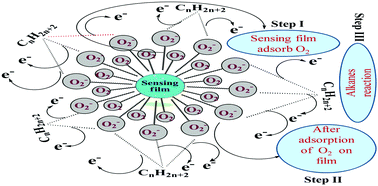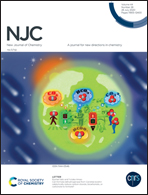An efficient room-temperature liquefied petroleum gas sensor based on trirutile copper antimonate nano-polygons
Abstract
In this paper, the synthesis, characterization and sensing applications (in terms of liquefied petroleum gas and carbon dioxide gas) of copper antimonate (CuSb2O6) nano-polygons have been reported. The sensing surface was decorated with nano-polygons on a porous network. Structural characterization revealed the crystalline nature of CuSb2O6 with a crystallite size of 21 nm. The optical properties (UV-visible absorption and Fourier transform infrared absorption) of the annealed and as-synthesized CuSb2O6 were also studied. Further, an effort was made towards the development of an LPG sensor using the CuSb2O6 films that are characterized by high sensitivity, high stability, short response and recovery times, and most importantly, room-temperature (27 °C) operation. Examination of the gas sensing properties showed that the CuSb2O6 nano-polygons exhibited better response towards liquefied petroleum gas adsorption than carbon dioxide. The possible surface-sensing mechanism of the decorated surface on exposure to the target gas has also been discussed. The gas-sensing properties demonstrated that the CuSb2O6 nano-polygons are promising candidates for high-performance LPG sensors that operate at room temperature.



 Please wait while we load your content...
Please wait while we load your content...